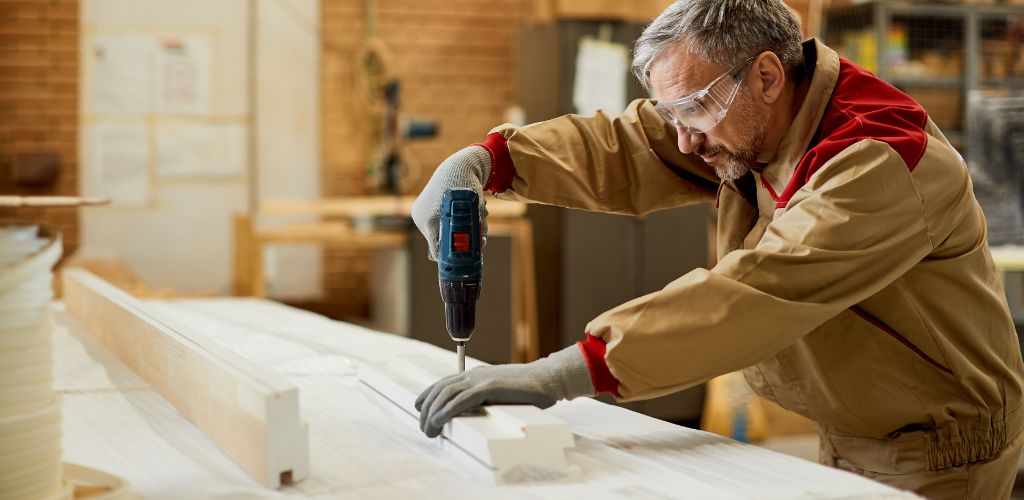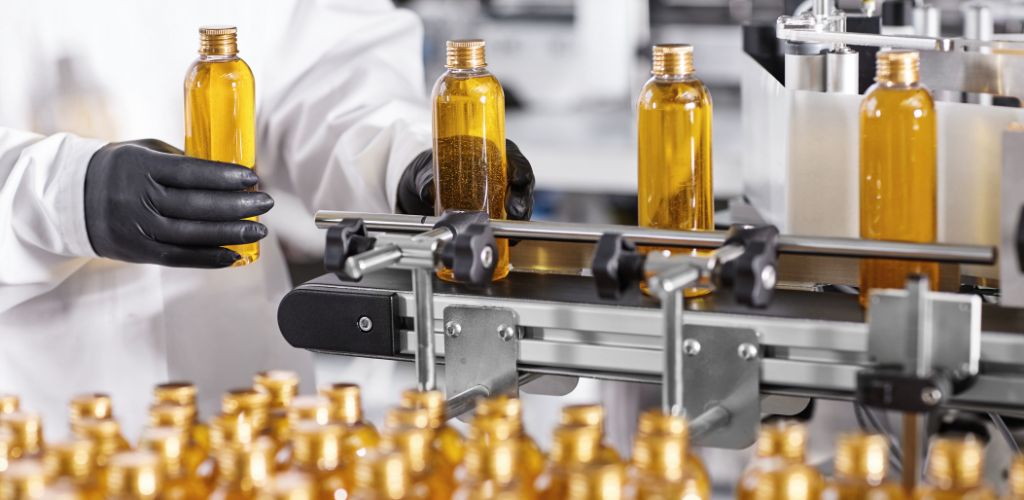India’s manufacturing sector is becoming a major contributor to the country’s economic growth, offering many opportunities for entrepreneurs. With the government aiming to increase the manufacturing sector’s share of GDP from 17% to 25% by 2025, this sector is set for significant expansion. Sectors like textiles, electronics, and automobiles offer great potential for new ventures.
Entrepreneurs looking to start a profitable business will find India’s manufacturing industry well-supported by favorable government policies and growing demand. Now is the perfect time to explore these opportunities and contribute to the country’s economic development.
In this blog, we will explore some of the best manufacturing business ideas in India and how you can leverage them to build a successful venture.
Factors to Consider Before Starting a Manufacturing Business in India
1. Market Demand and Target Audience
- Assessing Market Demand: Before starting any manufacturing business, it is essential to evaluate the current market demand for the product you plan to manufacture. Researching market trends, consumer preferences, and future projections will help in understanding the potential success of your business.
- Identifying Target Audience: Clearly define your target audience based on demographics, geographic regions, and purchasing behavior. This helps in tailoring your products to meet their needs and ensures that you are manufacturing what the market requires.
2. Availability of Raw Materials
- Local Supply vs Imports: The proximity and availability of raw materials play a crucial role in deciding the location and profitability of a manufacturing business. Locally available raw materials reduce costs and improve efficiency. If raw materials need to be imported, it is important to factor in additional costs and potential supply chain delays.
- Sustainability Considerations: With increasing environmental concerns, opting for sustainable raw materials can offer a competitive edge and align with evolving consumer expectations for eco-friendly products.
3. Location and Logistics
- Strategic Location: Choosing the right location for your manufacturing unit is vital for reducing production costs. Consider locations close to your suppliers and customers to minimize logistics costs. Industrial zones often provide better infrastructure and benefits such as easy access to raw materials, transportation, and power supply.
- Logistics Management: Efficient logistics and distribution networks are necessary for timely delivery of goods. Evaluate the transportation facilities, connectivity with key markets, and warehousing options before finalizing a location.
4. Government Policies and Incentives
- Incentives and Schemes: The Indian government has launched various schemes and incentives to encourage the manufacturing sector. Programs like the Make in India initiative, Production Linked Incentive (PLI) scheme, and state-specific subsidies can provide financial relief, tax exemptions, and infrastructure support.
- Regulatory Compliance: It is important to ensure compliance with local, state, and national regulations related to manufacturing, labor laws, and environmental standards. Failing to meet these legal requirements can result in penalties and hinder business operations.
5. Investment and Funding Options
- Initial Capital Requirements: Manufacturing businesses generally require substantial capital investment for setting up machinery, infrastructure, and procurement of raw materials. Estimating the required investment and creating a financial plan is critical.
- Funding Options: Various funding options such as bank loans, venture capital, government grants, and subsidies are available for manufacturing startups. Exploring these options early on will help secure the necessary capital for business setup and growth.
Top 10 Manufacturing Business Ideas in India
1. Textile Manufacturing

India is one of the largest textile producers globally, contributing around 12% to the country’s export earnings. With a rapidly growing middle class and increasing demand for apparel, the textile industry in India is flourishing. Additionally, the government’s focus on the sector through the National Textile Policy aims to push the industry to reach a $350 billion market by 2025.
Key Features:
- Wide product range including garments, home textiles, and industrial textiles.
- Requires raw materials like cotton, silk, and synthetic fibers.
- Can be scaled from small units to large industrial operations.
- Offers high domestic and international demand, particularly in Europe and the U.S.
2. Organic Food Processing

India’s organic food market is projected to reach $10.5 billion by 2025 due to rising health awareness. The growing middle-class population, along with government subsidies under the Paramparagat Krishi Vikas Yojana (PKVY), has accelerated the growth of organic food processing businesses in the country.
Key Features:
- Processing organic fruits, vegetables, cereals, and oils.
- Products include organic snacks, juices, spices, and packaged foods.
- Medium initial investment, with options to scale.
- Growing demand domestically and internationally, especially in the U.S. and Europe.
3. Leather Goods Manufacturing

India is the second-largest exporter of leather garments globally and produces about 13% of the world’s leather. With a growing fashion industry and demand for high-quality leather accessories, the leather goods manufacturing sector is thriving, contributing to both domestic consumption and exports.
Key Features:
- Products include shoes, belts, handbags, and leather garments.
- Investment varies depending on machinery and raw material costs.
- Focus on premium leather goods for export markets.
- Domestic demand is increasing, driven by rising incomes and fashion trends.
4. Furniture Manufacturing

The Indian furniture market is expected to grow at a 12.91% CAGR from 2020 to 2027, driven by increasing urbanization and real estate development. Demand for modular, eco-friendly furniture has surged, especially in metropolitan areas and export markets like the U.S.
Key Features:
- Manufacture of wooden, metal, and modular furniture for homes and offices.
- Options for custom designs and eco-friendly materials.
- Initial investment can range from low to high, depending on scale.
- Strong demand domestically, with growing export potential.
5. Paper Manufacturing

India’s paper consumption is expected to rise from 15 million tons in 2020 to 23.5 million tons by 2025, fueled by the growing packaging industry and increasing literacy rates. Despite the digital age, paper products like packaging materials, tissues, and notebooks remain essential.
Key Features:
- Production of packaging paper, tissues, notebooks, and other paper goods.
- Medium investment required for manufacturing machinery and raw materials.
- High demand from the packaging, education, and hygiene sectors.
- Sustainable paper products can capture an emerging eco-friendly market.
6. Plastic Products Manufacturing

India’s plastics industry is growing at a rate of 8-10% annually, despite the increasing focus on sustainability. The demand for plastic products in packaging, construction, and household items remains high, though manufacturers are exploring alternatives like biodegradable plastics.
Key Features:
- Manufacturing items such as containers, household items, toys, and packaging materials.
- Investment depends on the type of plastic products and machinery.
- Opportunities to innovate with eco-friendly plastic alternatives.
- High domestic demand, with international opportunities for sustainable plastics.
7. Herbal Products Manufacturing

India is the birthplace of Ayurveda, and the herbal products market is projected to grow to ₹5 trillion by 2025. The rising global demand for natural and organic products, along with the government’s support of Ayurveda, has spurred growth in this industry.
Key Features:
- Production of herbal cosmetics, medicines, and supplements.
- Medium investment, with low production costs for raw materials.
- Increasing demand domestically and in international markets for natural products.
- Export potential to countries with a growing interest in Ayurveda.
8. Automobile Parts Manufacturing

India is the fourth-largest automobile market in the world, and this sector heavily relies on automobile parts manufacturers. As India aims to become a global manufacturing hub for electric vehicles (EVs), the demand for components like batteries and electronics is set to grow significantly.
Key Features:
- Manufacturing components such as tires, batteries, engine parts, and accessories.
- High investment, especially in technology and skilled labor.
- Increasing demand from domestic automobile manufacturers.
- Export potential as India strengthens its position in the global automotive supply chain.
9. Pharmaceutical Manufacturing

India is the world’s largest supplier of generic drugs, exporting to over 200 countries. The pharmaceutical manufacturing industry is projected to grow at a CAGR of 22.4%, driven by rising healthcare demands and innovations in biotech and vaccine development.
Key Features:
- Focus on producing generic medicines, vaccines, and APIs (active pharmaceutical ingredients).
- High investment is required, with strict regulatory compliance.
- Strong domestic demand and robust export potential.
- Potential for expansion into emerging markets and developing countries.
10. Electronic Goods Manufacturing

With the Indian electronics market expected to reach $400 billion by 2025, the demand for electronic products and components like smartphones, computers, and home appliances is rising. India’s push toward self-reliance in electronics manufacturing offers significant opportunities.
Key Features:
- Manufacturing consumer electronics, circuit boards, and components.
- High initial investment, especially for advanced manufacturing units.
- Expanding domestic market with increasing reliance on electronic devices.
- Potential to capture global markets, especially in Asia and Africa.
We Also Suggest: AI Tools For Manufacturing
Government Support and Incentives for Manufacturing in India
The Indian government has introduced several initiatives to boost manufacturing and support startups and MSMEs. These efforts aim to make India a global manufacturing hub.
1. Production-Linked Incentive (PLI) Scheme:
The PLI scheme provides incentives to manufacturers based on incremental sales of products manufactured in India. It covers sectors like electronics, pharmaceuticals, and textiles, encouraging companies to boost domestic production. The government has earmarked ₹1.97 lakh crore for the scheme over five years.
2. Tax Incentives and Subsidies:
Manufacturers, especially startups and MSMEs, can benefit from tax exemptions and subsidies. The Startup India scheme offers a 3-year tax holiday for eligible startups, while the MSME Development Act provides subsidies for technology upgrades, capital investment, and infrastructure development.
3. Low-Cost Loans:
The government, through various schemes like the Credit Linked Capital Subsidy Scheme (CLCSS) and Stand-Up India, offers low-cost loans and financial assistance to MSMEs. These initiatives aim to improve access to credit and reduce financial barriers for new manufacturers.
4. State-Specific Initiatives:
Different states offer unique incentives to attract manufacturing investments. For example:
- Maharashtra provides subsidies on land and power to industries set up in its industrial zones.
- Tamil Nadu has policies to promote the automobile and electronics sectors.
- Gujarat focuses on chemicals, textiles, and agro-processing, with attractive investment incentives.
Challenges in the Manufacturing Sector
The manufacturing sector in India faces several notable challenges despite its potential.
Competition from Established Players: New manufacturers often struggle against established industry leaders with superior technology and distribution networks. Competing on price and quality can be particularly difficult for startups.
Regulatory Hurdles and Compliance: Navigating complex regulations and obtaining necessary licenses can delay operations. Streamlining these processes is essential to improving the ease of doing business.
Infrastructure Issues: Inadequate infrastructure, including unreliable power and poor transportation networks, disrupts production and increases costs, particularly in less developed regions.
Fluctuations in Raw Material Costs: volatile raw material prices can impact production costs and competitiveness. Managing these fluctuations without increasing consumer prices remains a significant challenge.
Addressing these issues through policy reforms, infrastructure investment, and cost management strategies is crucial for the sector’s growth and global competitiveness.
Also Read: Logistics Management Software
Conclusion
India’s manufacturing sector holds tremendous growth potential, supported by a strong domestic market and favorable government policies like the Production Linked Incentive (PLI) scheme. Entrepreneurs have a unique opportunity to capitalize on these initiatives and expand their businesses with the help of various incentives and support.
While challenges exist, they can be overcome with strategic planning and innovation. India is steadily increasing its global manufacturing influence, offering a promising environment for new ventures. Embracing these opportunities can lead to significant contributions to both the domestic and international economies.
- बिलासपुर में सजेगा पत्रकारों का महाकुंभ: छ.ग. प्रखर पत्रकार महासंघ के महासम्मेलन की तैयारियां अंतिम चरण में, केंद्रीय मंत्री तोखन साहू होंगे मुख्य अतिथि - December 13, 2025
- धान खरीदी को आसान बनाने की दिशा में राज्य सरकार का निर्णायक कदम: धान विक्रय प्रक्रिया हुई सरल, अब दिन-रात 24 घंटे कभी भी मिलेगा तूहर टोकन - December 13, 2025
- कोपरा जलाशय को रामसर साइट का दर्जा — छत्तीसगढ़ का पहला रामसर साइट, केन्द्रीय राज्यमंत्री तोखन साहू के पहल पर बिलासपुर के लिए ऐतिहासिक उपलब्धि - December 13, 2025

























